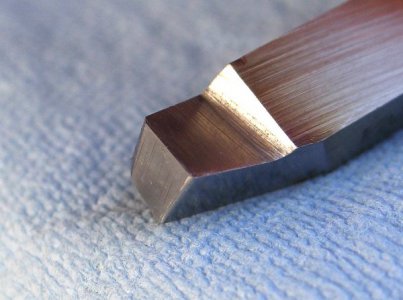- Joined
- Dec 20, 2012
- Messages
- 9,422
I have nothing to add but a thank you. I recently bought (5) 3/8" HSS blanks to get started on. I've tried some carbide and it worked ok but not a very good finish. I'm very new at this and like to run the lathe as slow as possible until I get a better feel for it. It had one HSS bit when I got it. I used it a few times and got a nice finish and then switched to carbide and could cut deeper but the finish wasn't as good. I feel like rpm is the main reason for that. I havea 6" and 8" bench grinders. I'm making some nice tool rests for the 6" and plan to use it for nothing but sharpening.
Your pics and descriptions were good. I really appreciate you sharing your time on this. That's why I like this place so much.
You're welcome. When you get that grinder set up, try making the tool I showed. It is a modified tool that will cut most common stuff while lowering cutting forces and cutting temperatures. If you reproduce it, it should rough well, size accurately and finish nicely. And you won't have to change your tool rest angle to make it.
Cutting speeds as we usually calculate them are starting points. Quite often, we need to adjust the speed to get the depth of cut we need (slower) or the finish we want (faster speed and/or slower feed). A good tool like that shown in the OP will let you cut deeper at higher speeds and will finish well at lower speeds due to the increased back rake. Give it a try and share it with us if you care to.


